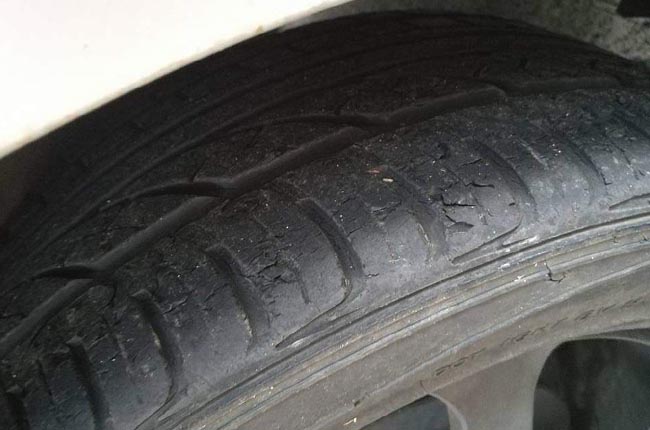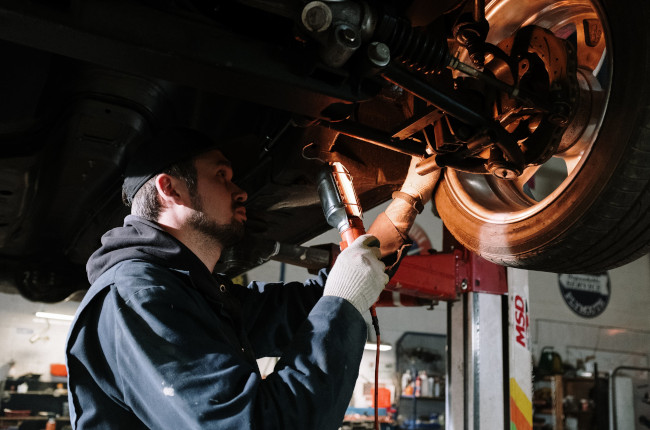
Over a long period of time, and even if you've been attending to your vehicle's maintenance, you may find that your car will get less and less comfortable as you go over bump after bump and pothole after pothole. Your car’s suspension takes a lot of abuse and one of the key wear components that you need to replace after a while are the dampers. Otherwise known as shock absorbers, they make sure that your wheels remain in contact with the ground by making your wheels rebound back to keep your wheels planted even over humps. Dampers are usually oil-filled and have components inside that limit the flow of oil. Over time, seals can leak and the oil can leak out, and the oil can break down.
However, how can you tell? Here are a few telltale signs that your car’s dampers are in need of replacement or rebuilding.
Excessive movement

The key function of a damper is to control the compression and rebound of the spring. If your damper is done for, then your car will feel like it is on nothing but springs. To check this, you don’t need to get out on the road.
To test the front shocks, open the hood, and put weight on the car. Push down on the chassis with some force and then observe the reaction of the front. After pushing down, you’d want the car to spring back up and settle once. If your shock is blown, then your car will move up and down more than once. This applies to most passenger cars, but there are other cars with a more specialized suspension setup, such as the one on the Ford Mustang with its magnetorheological shock absorbers. There are more factors that would come into play the more complex the componentry gets so it would be better to have those types checked by a certified mechanic. Do the same for the rear by opening the trunk or rear door then push down. Same as the front and observe the reaction of the car’s rear. You want the car to spring back up and settle once.
Bouncy ride

If you’re in the car and driving on normal roads, faulty dampers will make your ride exceedingly uncomfortable. You will notice that there is excessive body movement going over bumps whether fast or slow. Driving slowly over roads should be more or less smooth and controlled without excessive up and down motion. If you feel yourself bouncing off your seat, then that should be an indication that you need to change your shocks.
Oil leak

As previously stated, most shocks are oil-filled and if your damper’s seals have gone bad, then you might need to rebuild or replace the shock absorber. Without the suspension oil, the shock’s going to be under-damped, and you’ll get a bouncy ride.
You can also visually inspect your car’s suspension. On a dry day, if you see some oil on the spring or your suspension damper, you should
Unusual tire tread wear

Another visual sign to check for to see if your shocks need replacement is if your tires have unusual tread wear on them. If your suspension is off, then your tires will experience uneven tread wear, and it will look different from its normal wear and tear. Worn shocks can cause scalloped dips to develop along the edge of the tread which can be very dangerous if left alone.
So what do I do?

After you’ve identified and discerned that your suspension is not performing optimally you have two options, replacement or rebuild. In any case, you should take your car to a certified mechanic to get your car properly worked on and repaired. After your suspension is put back together, it’s also equally important to get your car’s suspension aligned after the repair.
Rebuilding your suspension is the more cost-effective option compared to replacement. Unless you’re running a bespoke suspension system with rarer-than-gold suspension dampers and springs, then you can take your car to a suspension specialist to rebuild. By rebuilding, you can save yourself some money if the fix is a bit minor. Expect the performance to go back to stock or very close to stock.
If you choose the replacement option, the only thing that you have to make sure of is that you’re replacing your shock with a replacement-quality part, or direct from an OEM part supplier.
After you get your parts replaced, make sure to get the suspension adjusted and aligned so your car handles properly.
Latest Features
-
The 6 things every Ford Ranger must pass before it leaves the factory / Featured Article
Every Ford Ranger, from the base model to the Ranger Raptor, goes through a full inspection process before it leaves the factory. This includes six steps that make sure it’s ready to drive a...
-
Which GAC AION EV is best for your everyday lifestyle? / Featured Article
The GAC AION lineup has something for everyone, maybe you're after space, speed, or just a smooth city drive. Here's a quick breakdown of which model might work best for your day-to-day life...
-
The AutoDeal Awards 2024: Celebrating excellence in the auto Industry / Featured Article
The AutoDeal Awards 2024: Celebrating excellence in the auto Industry
Popular Articles
-
Cheapest cars under P700,000 in the Philippines
Jerome Tresvalles · Sep 02, 2024
-
First car or next car, the Ford EcoSport is a tough package to beat
Jun 18, 2021
-
Car Maintenance checklist and guide – here’s everything you need to know
Earl Lee · Jan 12, 2021
-
Most fuel efficient family cars in the Philippines
Bryan Aaron Rivera · Nov 27, 2020
-
2021 Geely Okavango — Everything you need to know
Joey Deriquito · Nov 19, 2020
-
Family cars in the Philippines with the biggest trunks
Sep 20, 2023
-
Head to head: Toyota Rush vs. Suzuki XL7
Joey Deriquito · Oct 28, 2020
-
Why oil changes are important for your car
Earl Lee · Nov 10, 2020
-
2021 Kia Stonic — What you need to know about it
Joey Deriquito · Oct 16, 2020
-
Top 7 tips for buying a used car in the Philippines
Joey Deriquito · Nov 26, 2020




